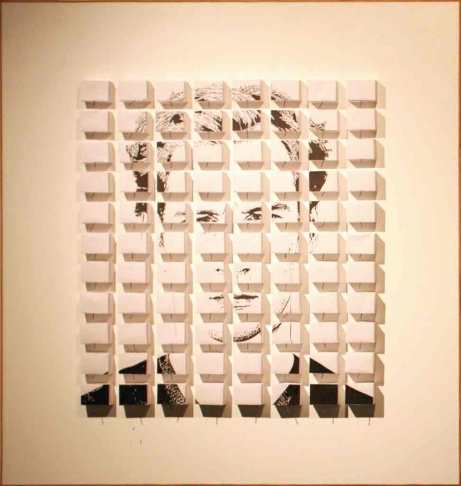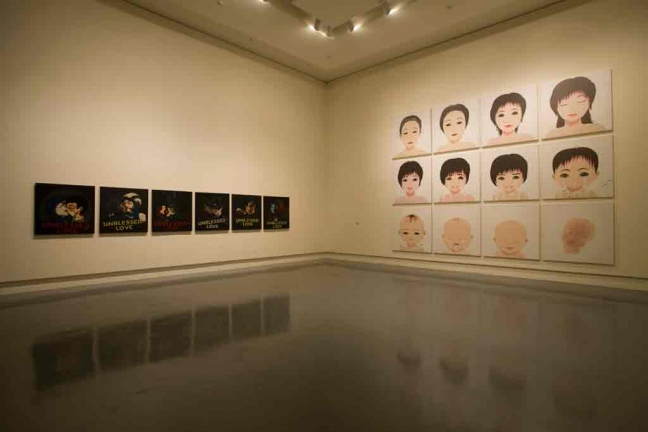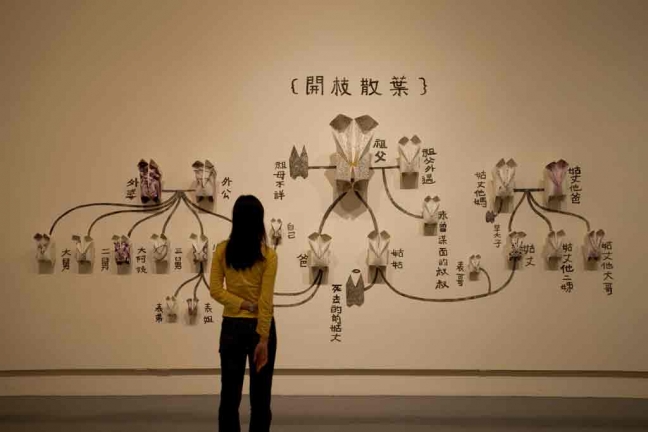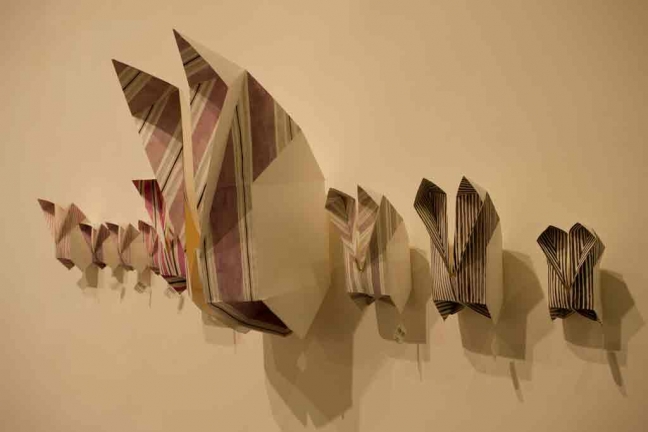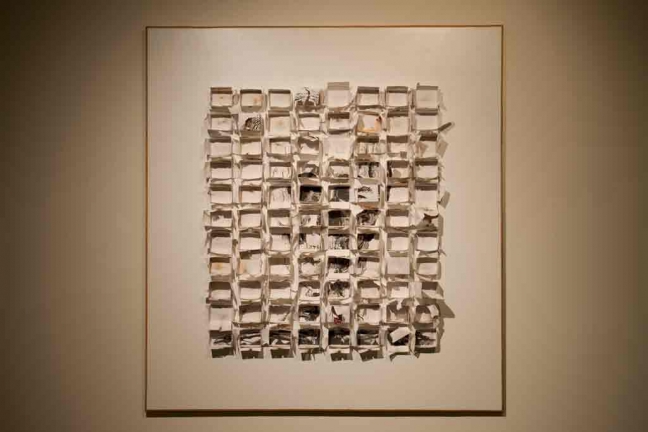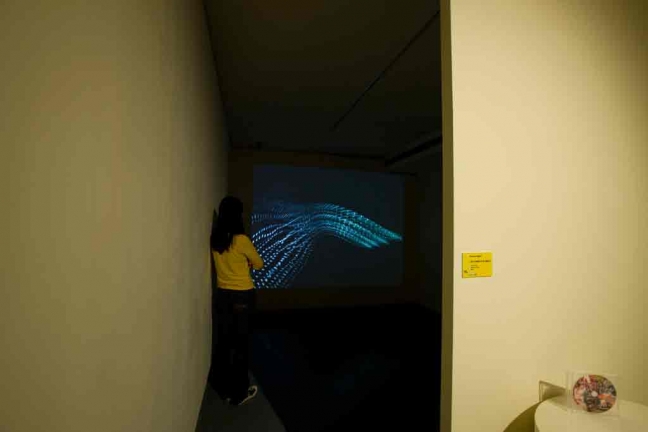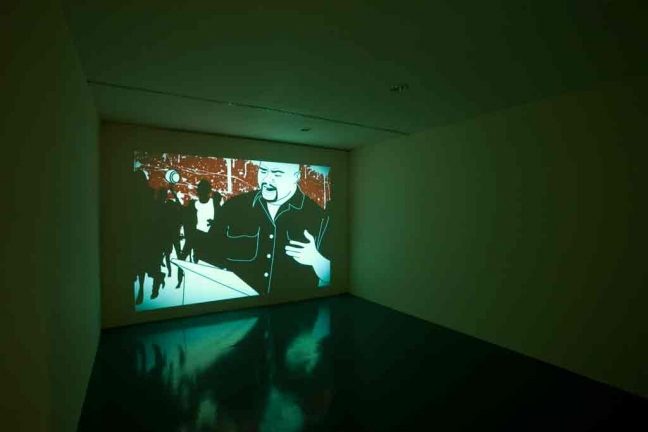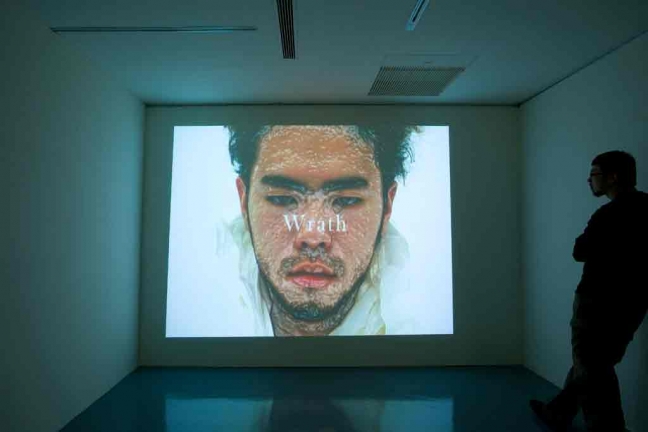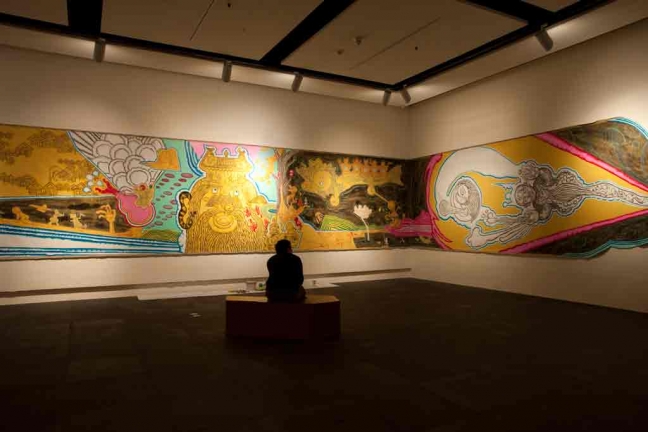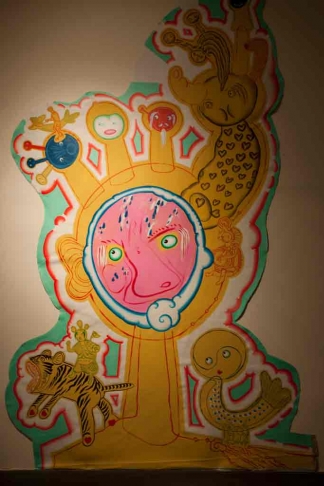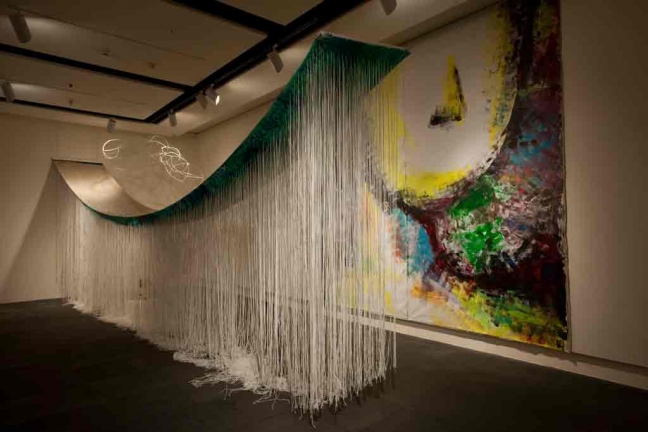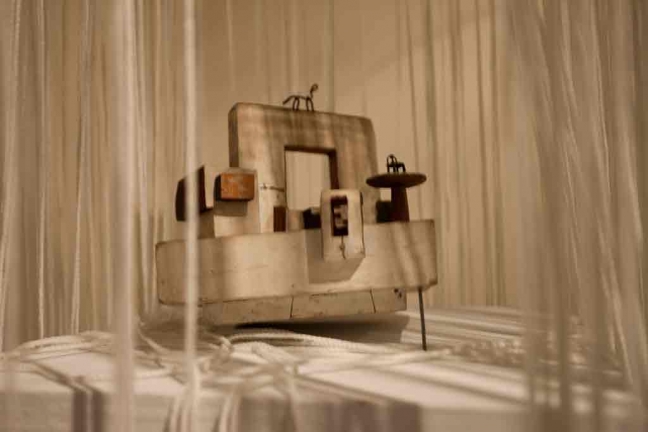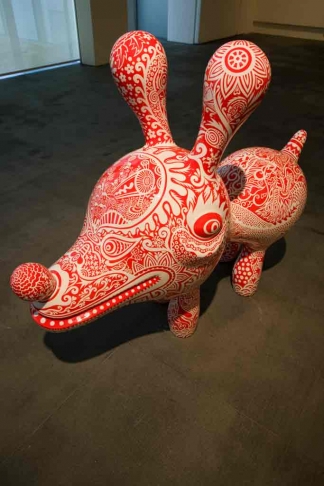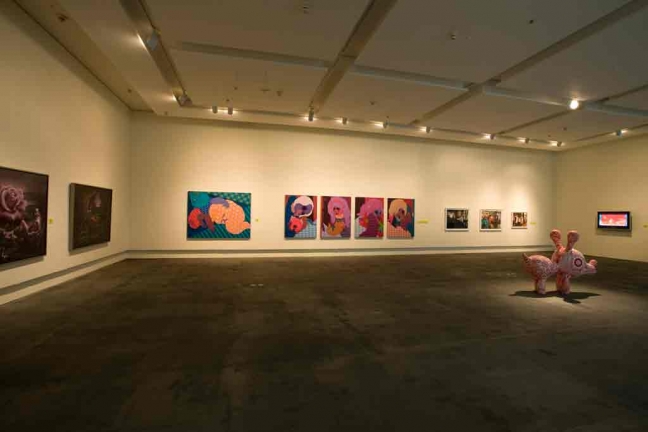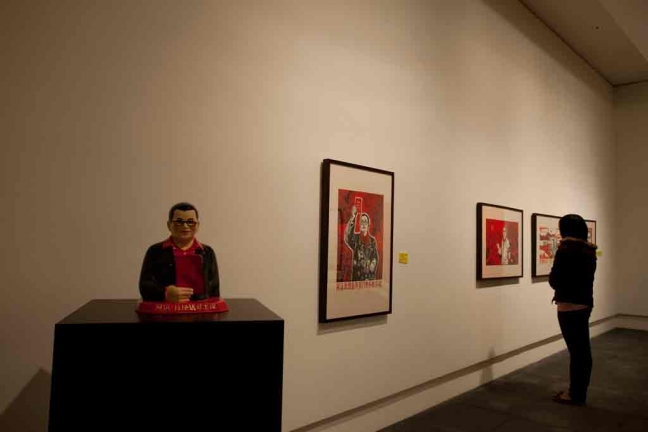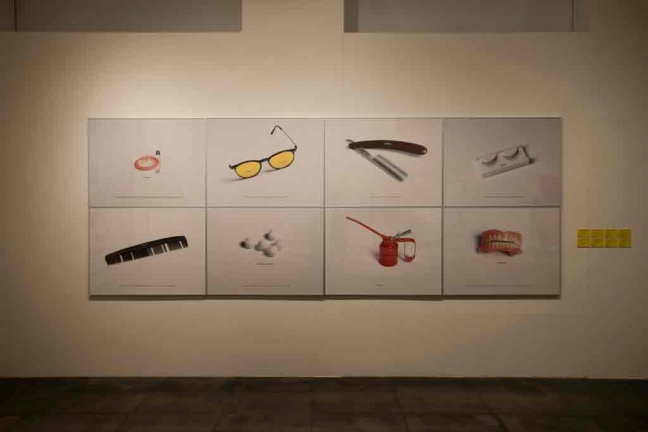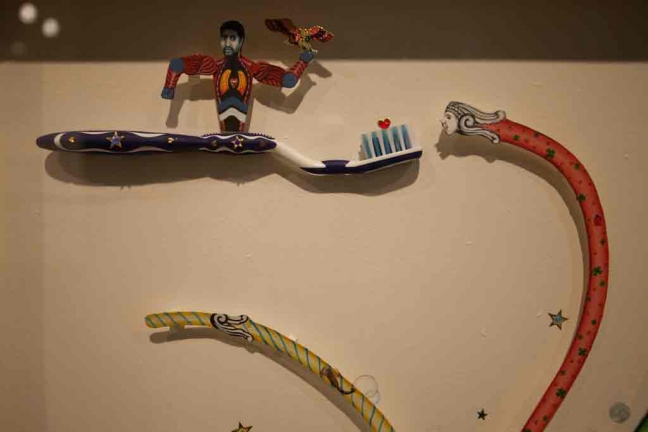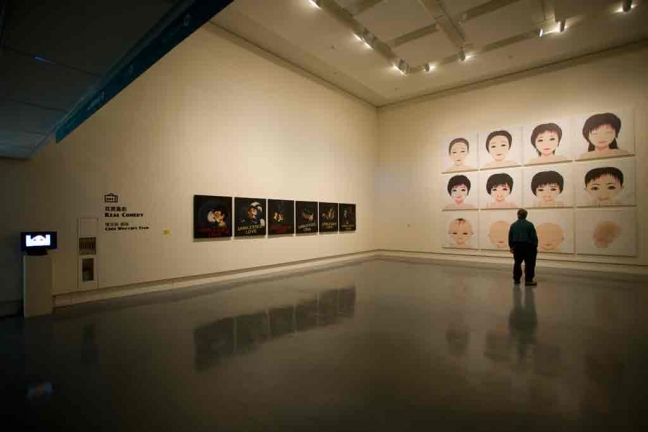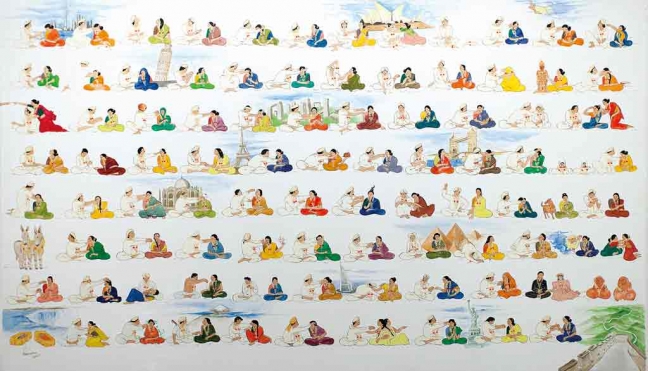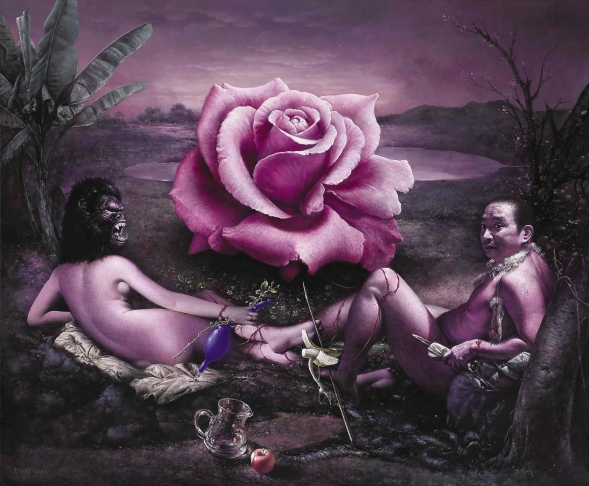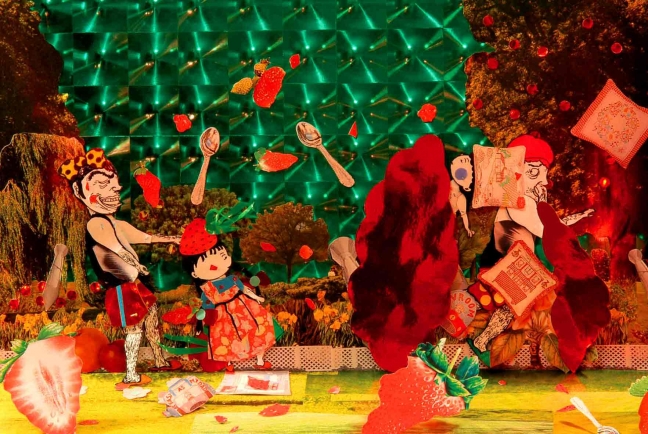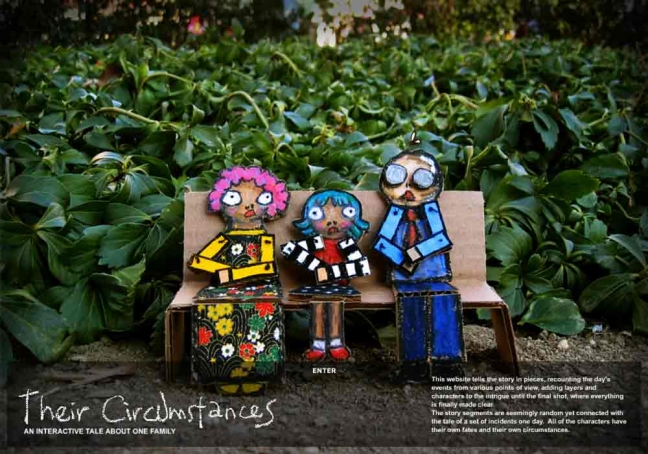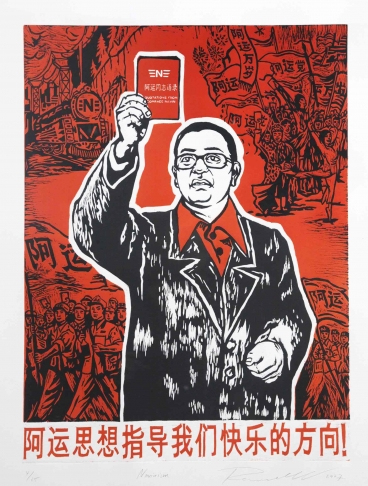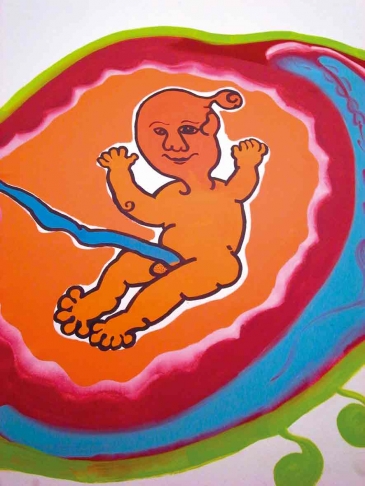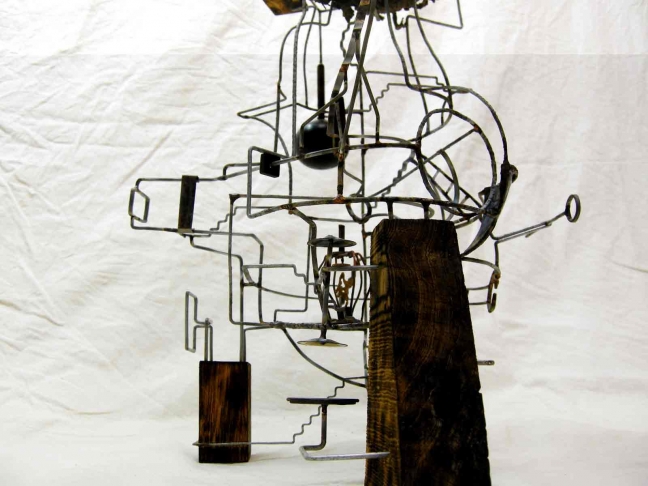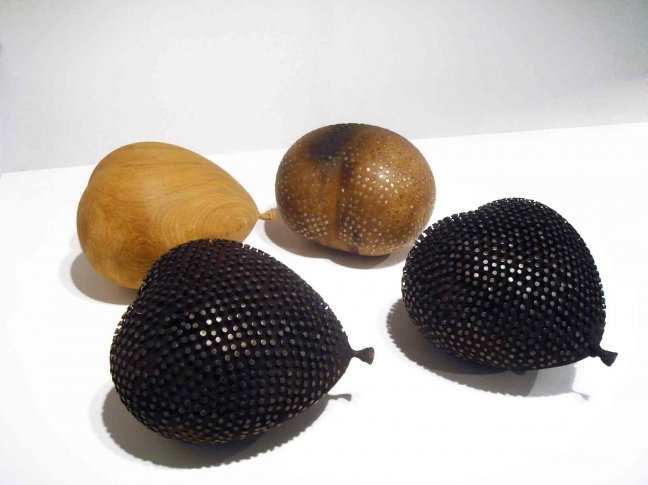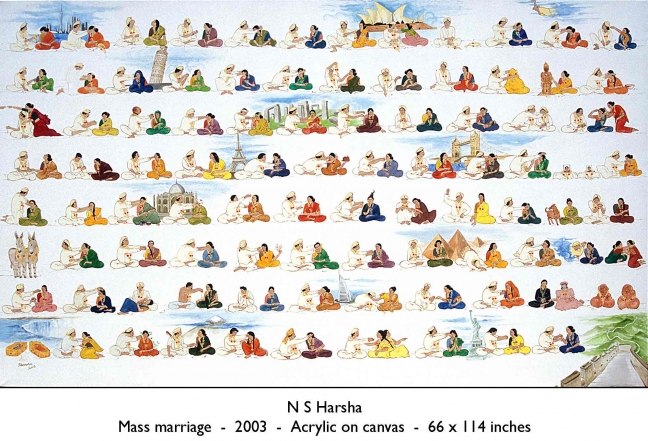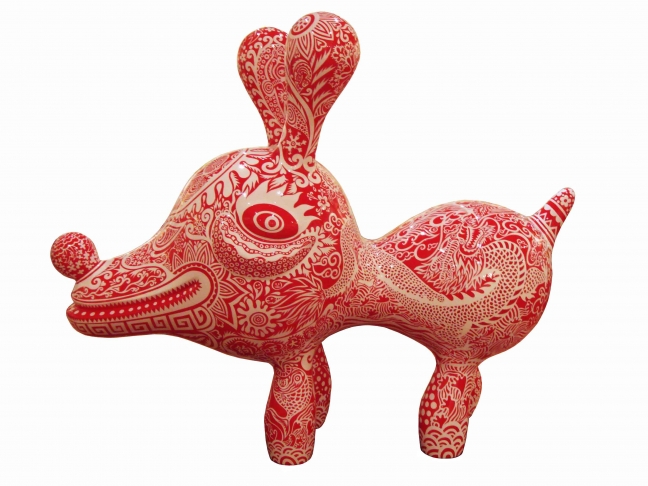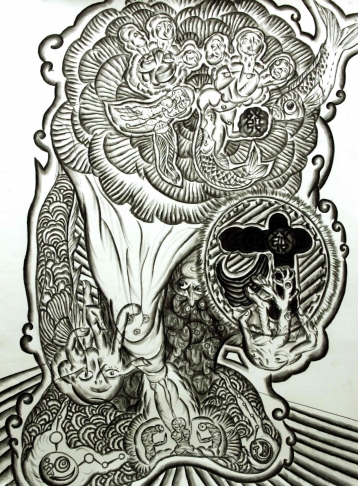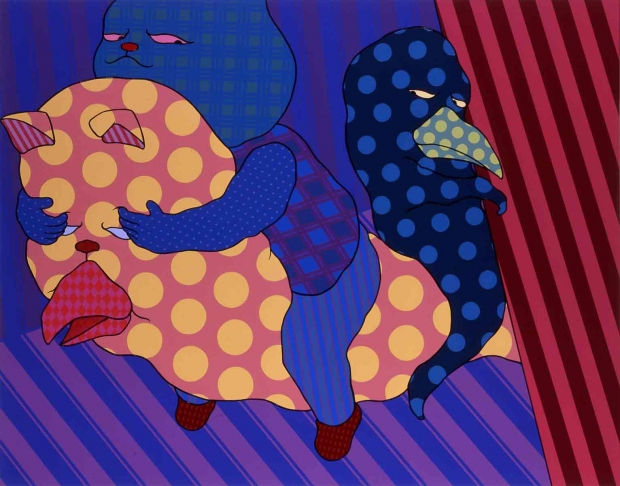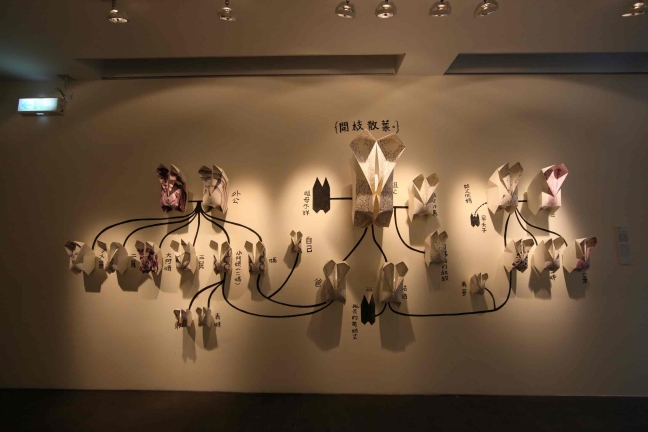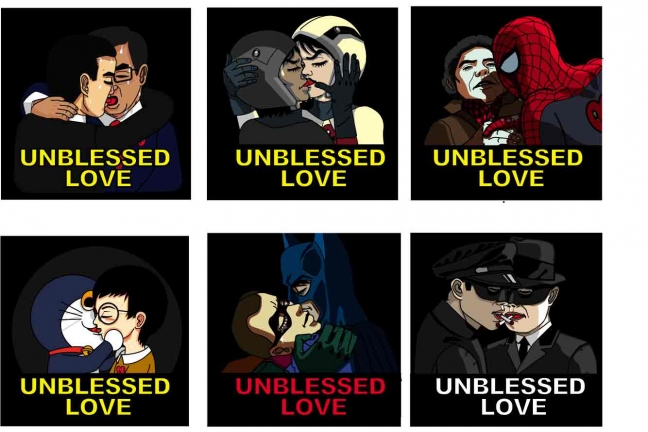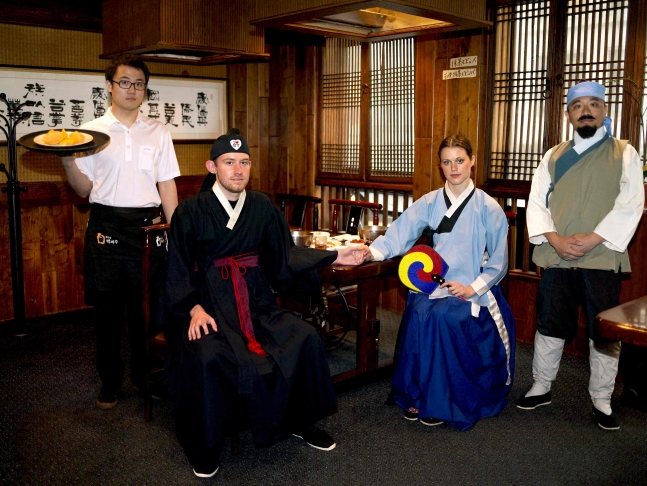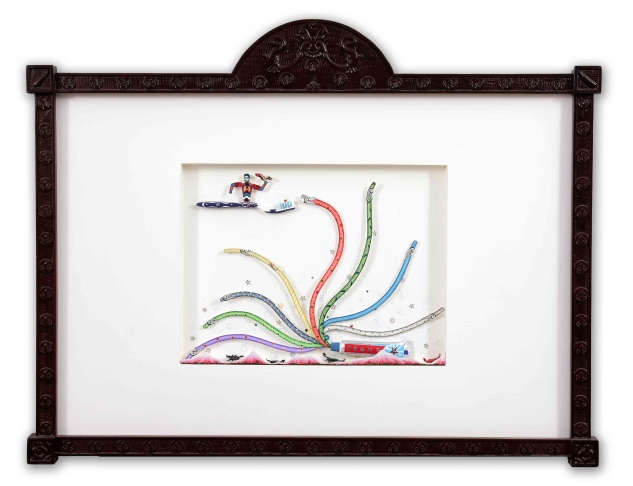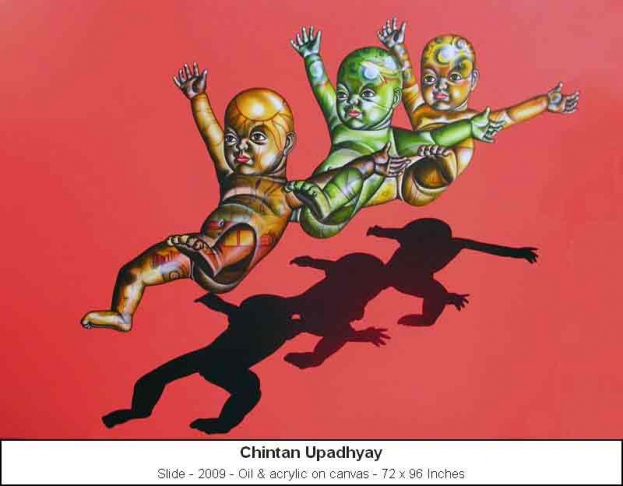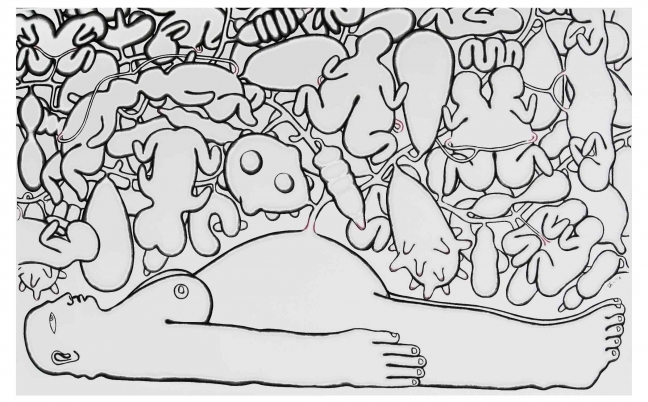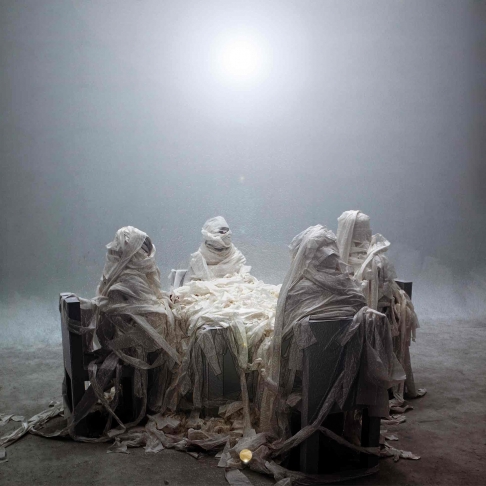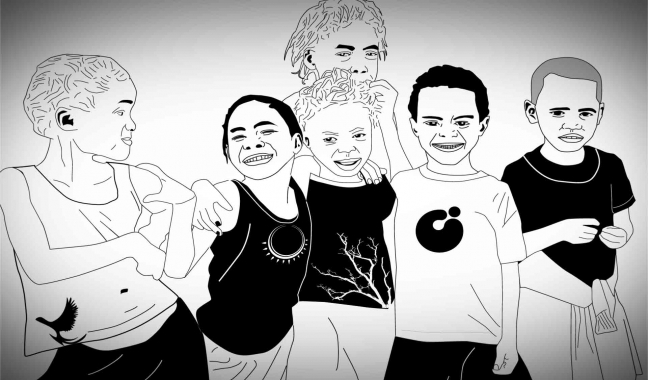Comedies
2009.10.03~2009.12.31
09:00 - 17:00
Exhibition Dates: 2009.10.03-12.31 Venue: Kuandu Museum of Fine Arts 1-2 F Gallery The French writer Honoré de Balzac recorded his observations with outstanding descriptions of 19th century French society in his Comédie Humaine. Two centuries later, we invite Taiwan-based artists to insert their own perspective on different aspects of society by presenting a comical approach to their works. Through variations on elements of comedy, the exhibition will consist of the complexities of human behavior and the depth of comedy. This time, Kuandu Museum of Fine Arts intends to subvert the typical curatorial process for organizing a show. Rather than following a curatorial grouping of work, Comedies will focus on artists and artist-chosen contexts. By selecting artists from various generations and disciplines, and by allowing artists to choose their collaborators, the exhibition will be conceived and curated the artists themselves. Therefore, the exhibition is solidified via the artists’ perspectives.
Exhibition Dates: 2009.10.03-12.31 Venue: Kuandu Museum of Fine Arts 1-2 F Gallery The French writer Honoré de Balzac recorded his observations with outstanding descriptions of 19th century French society in his Comédie Humaine. Two centuries later, we invite Taiwan-based artists to insert their own perspective on different aspects of society by presenting a comical approach to their works. Through variations on elements of comedy, the exhibition will consist of the complexities of human behavior and the depth of comedy. This time, Kuandu Museum of Fine Arts intends to subvert the typical curatorial process for organizing a show. Rather than following a curatorial grouping of work, Comedies will focus on artists and artist-chosen contexts. By selecting artists from various generations and disciplines, and by allowing artists to choose their collaborators, the exhibition will be conceived and curated the artists themselves. Therefore, the exhibition is solidified via the artists’ perspectives.
Under the name “Comedy”, this exhibition draws art works separately from collections different in nature. Although, from the organization perspective, the contents of the exhibition may be found to be a pile up of unrelated works, but the overall final presentation is in fact coherent. The art works echo each other, and if one slightly makes use of visual perception, the parallels between them can be traced and listed. In general, although the exhibition corresponds to the joyous theme of the Kuandu Art Festival, it has a rather under controlled and subdued voice as it is being exhibited in a quiet and square showroom. If placed on a spectrum with comedy on one end and tragedy on the other, an exhibition on “comedy” like this, showcasing a mix of different aspects of life, will most likely land near the tragedy end. Through the artists, aspects of life made up of joyous feelings and dramatic occasions reach out to all corners. Contemporary artist Navin Rawanchaikul, whose ancestral roots are in Hindu-Punjabi communities of what is now Pakistan, continues his style of illustrating the liveliness of ordinary people. Works categorized as cartoon, Navin portrays himself in the image as the leader of the “Kingdom of Navin”. In the image, Navin holds a little red book and adapts the marketing scheme used in the past by the Chinese Communist Party in its propaganda. Through the powerful gestures, the eye-catching color of red, and the brain-washed mass public depicted in the background, the radicalness of nationalism, or even, heroism ideologies resurfaces. Through the merchandised image of a bronze bust of Navin and the little red book behind it, Navin pokes fun of series of political manipulation and visual aesthetics in politics. Under the name of art, he rallies a counter attack, politically and anti-politically, on the visual violence in real life. N.S. Harsha is known for his use of multimedia, however only his delicate painting techniques are showcased in this exhibition. Mass Marriage indexes the joy and gentle atmosphere of traditional Indian weddings. Just like in Bollywood movies, on the bank of River Ganges, flower petals are thrown into the air and fall down like rain drops, and joyous occasions are filled with ever-lasting singing in soft and tender voices. World famous scenic sites such as the Niagara Falls, Buj Al Arab in Dubai, and Fuji Mountain pose as pleasant surprises in the painting. The couples in the painting seem happy together, however, if one is to look at the painting more closely, every couple have different love stories: a couple appear as photographs at the wedding (perhaps a marriage in another world?); another couple see an intrusive third person crashing the party. An aged old man finally marries his old lover, and a bride awaits for her groom in vain. On the bottom left corner beside the artist’s signature, a cradle is dangerously placed at top of the falls, the infant in the cradle urinates high into the air. All these shows that this painting, although presented in a traditional way, is not so traditional after all. The artist seems to have something to say, and the observers are required to spend sometime to examine the painting. Only so, can they discover the hidden messages. Reji Arachal, Prantik Chattopadhyay and Chintan Upadhyay go beyond the boundaries of shapes and forms, and use free running ideas to create fantasy-like images. Reji, basing on human organs, creates an image implying that, if not carefully handled, the weaving emotions within our body will erupt all at once. Prantik, through his mixed media pieces, exploits for the greatest freedom within the refrained space on a flat surface. The E Class Ideal boy rides a flying machine made of toothbrush, the merry-go-round is powered by real horses, the three-dimensional paper horses and scrapbook like cut and pasted amusement park facilities reflect the artists boyish charm, or his defiance to grow up. Chintan uses the clone floating in mid air to reveal his fantasy of heterotopia; the new order in the real world is hidden behind the ethical debates on clones, but Chintan, with his impulsive and disguise-less images, challenges violently the reality through the use of simple and pure colors. Sunil Gawde likes to break down the original meanings of objects, and through which induces simile. The series of digital images showcased in the showroom consists of eight modern objects that bring about cognitive associations to historic figures. Among the objects, Van Gogh’s yellow glasses are rather amusing. It is a frame lacking one earpiece with a statement at the end saying: “He cut off an ear for the favours of a whore. Would he have thought twice had he not had 20-20 vision?”; his poking fun of Duchamp in anther piece of his will probably put a smile on the face of the great artist as well: “WHAT DUCHAMP FORGOT-The puritan are fraterning refused to let his urinal qualify as a piece of art. Did the lack of sanitation provoke them?” The jokes may be lame, yet it shows that the artist is finding interesting ideas in the ordinary life. He is able to see the possibility and multiplicity of objects and events. In this showroom, a mixed atmosphere, through its provocative tinkling, is able to permeate into our exotic imaginations of foreign countries. If we move onto the next showroom, “Multiple Characters” self-explains its feature of materializing characters. Kuo Wei-Kuo’s self-absorbing portraits in oil paintings have become his signature in recent years. In these portraits, with surrealistic scenes overlapped with classical oil painting style, depict a seemingly innocent mid-age man like one that can always be found in a Stephen Chow movie--mischievous yet powerful. This powerfulness comes from the dominant role of the man in the paintings. In his hidden world, order of things can be twisted; he can be free spirited, he can be clueless. In Rose, Rose! I Love You and Purple-Red Piggy’s Last Night , Kuo, attempting to convey his subconscious desires, adds intense tug-of-wars to the beautiful scenes. The purple-red piggy may stand out among the dark tone of color, but note that its face is with both a smile and tears. The man in the painting with a halo is in a gesture suggesting that he may be comforting the pig, or maybe about to murder her and is threatening to push her into the water (even her legs are tied-up already). This kind of mood with a hint of danger resembles the reality of lovers’ last struggle trying to break up with each other. Rose, Rose! I Love You hints about love. Nevertheless, knife and intwined red threads can be found in the seemingly relaxed scene of a picnic. The beast head mask worn by the female symbolizes the start of the war of love, yet the war is the kind that will bring no serious harms. The mid-age man is the representation of Kuo’s subconsciousness, always skillfully covering up the private part, as if that little coverage is the last line of defense before fully exposing his true self. It is also this coverage that adds a flavor of ambiguity to the painting. Chen Ching-Yao used colonization and subculture issues instead of simple imagination of a mid-aged man in his latest work “ I © NY” series as a resident artist in New York. The work shows a sense of immediacy. Of course confusion caused by cultural multi-dimensions is much felt and experienced in the US, a culture melting pot. The statement of multi-culture can be easily and directly presented and associated in the restaurant setting. Decorations and the interior of the restaurant are, however, based on imagination of the culture and therefore the culture shown in these restaurants is not as genuine and authentic. The most vivid and fertile imagination is always fostered in a distance. To pursue the cultural authenticity of his work, there was some kind of fascination and possession on the scene and among all actors. But just as unpredictable as Chen is, he did not arrange the scene as if it were well planned. Rather it looks like a cheap scene made of random pieces. The characters presenting cultural essences seemed to look quite serious but their existence is simply a contradiction. Right next to Chen’s work is “Bird man” by Liao Yu-An, a new-generation artist. The “Birdman”in the painting has slightly upward-slanted eyes, hidden in the background made of checkers which implies the society’s norms and constraints. The condescending eyes seem to be ignoring others but also show that he cannot fit in. In an orderly and articulate atmosphere, the personalities of the character show that he is just as weak as you and me, simply looking for answers and trying to survive in a well-organized society by coping with all circumstances and doing our very best. Hong Yi, a mid-generation artist, combines totems which are inspired by the tradition of papercutting, and numerous tacky bright colors in his works. His style is unique among artists who focus on self-exploration or political criticism. Through his works, he shows his own life experience and records with no limitation or boundaries. Hong believes that art should be part of life. He puts what he sees and hears along with his observation of men and women in this fleshly world in his works. These works are animal sculptures that are somewhat kind of cute. His works are just like magnifying glasses. They are also like old-fashions pictorials, documenting the lives of the general public, luring us to take a look of the lives that are so dear to us. These unique sculptures also reflect Hong’s lay-back attitude as an artist. Du Pei-Shih, who also uses multiple colors in her works, addresses the solemn globalization issue as her topic. Through collage, her works seem to be sweet on the outside but show the bitter reality that people nowadays have to face on the inside. “11 Steps Towards Happiness” is based on a nuclear war survival guide in advanced western countries. Through eleven steps that can be planned ahead of time, people can save themselves while facing severe disasters. However, Du’s illustrated version shows people’s ridiculous and hasty responses, which in turn implies how ridiculous the guide itself is.This work also demonstrates how unpredictable accidents are and how people simply cannot make comprehensive plans ahead of time. It simply reveals how hard people are trying to change the unchangeable reality and mocks those who try doing so solely on themselves. Being in that situation is like being in a theater of chaos, no need to explain anything and jus let it be. Artists have their own ways to tell stories. They show all dimensions and aspects of a comedy. This comedy does not make people do nothing but laughing. The real intention underneath these works makes you sad, curious and even experience some heartache. It is straight forward, with a bit of tragic elements underneath and an weakening sense of humor.
Under the name “Comedy”, this exhibition draws art works separately from collections different in nature. Although, from the organization perspective, the contents of the exhibition may be found to be a pile up of unrelated works, but the overall final presentation is in fact coherent. The art works echo each other, and if one slightly makes use of visual perception, the parallels between them can be traced and listed. In general, although the exhibition corresponds to the joyous theme of the Kuandu Art Festival, it has a rather under controlled and subdued voice as it is being exhibited in a quiet and square showroom. If placed on a spectrum with comedy on one end and tragedy on the other, an exhibition on “comedy” like this, showcasing a mix of different aspects of life, will most likely land near the tragedy end. Through the artists, aspects of life made up of joyous feelings and dramatic occasions reach out to all corners. Contemporary artist Navin Rawanchaikul, whose ancestral roots are in Hindu-Punjabi communities of what is now Pakistan, continues his style of illustrating the liveliness of ordinary people. Works categorized as cartoon, Navin portrays himself in the image as the leader of the “Kingdom of Navin”. In the image, Navin holds a little red book and adapts the marketing scheme used in the past by the Chinese Communist Party in its propaganda. Through the powerful gestures, the eye-catching color of red, and the brain-washed mass public depicted in the background, the radicalness of nationalism, or even, heroism ideologies resurfaces. Through the merchandised image of a bronze bust of Navin and the little red book behind it, Navin pokes fun of series of political manipulation and visual aesthetics in politics. Under the name of art, he rallies a counter attack, politically and anti-politically, on the visual violence in real life. N.S. Harsha is known for his use of multimedia, however only his delicate painting techniques are showcased in this exhibition. Mass Marriage indexes the joy and gentle atmosphere of traditional Indian weddings. Just like in Bollywood movies, on the bank of River Ganges, flower petals are thrown into the air and fall down like rain drops, and joyous occasions are filled with ever-lasting singing in soft and tender voices. World famous scenic sites such as the Niagara Falls, Buj Al Arab in Dubai, and Fuji Mountain pose as pleasant surprises in the painting. The couples in the painting seem happy together, however, if one is to look at the painting more closely, every couple have different love stories: a couple appear as photographs at the wedding (perhaps a marriage in another world?); another couple see an intrusive third person crashing the party. An aged old man finally marries his old lover, and a bride awaits for her groom in vain. On the bottom left corner beside the artist’s signature, a cradle is dangerously placed at top of the falls, the infant in the cradle urinates high into the air. All these shows that this painting, although presented in a traditional way, is not so traditional after all. The artist seems to have something to say, and the observers are required to spend sometime to examine the painting. Only so, can they discover the hidden messages. Reji Arachal, Prantik Chattopadhyay and Chintan Upadhyay go beyond the boundaries of shapes and forms, and use free running ideas to create fantasy-like images. Reji, basing on human organs, creates an image implying that, if not carefully handled, the weaving emotions within our body will erupt all at once. Prantik, through his mixed media pieces, exploits for the greatest freedom within the refrained space on a flat surface. The E Class Ideal boy rides a flying machine made of toothbrush, the merry-go-round is powered by real horses, the three-dimensional paper horses and scrapbook like cut and pasted amusement park facilities reflect the artists boyish charm, or his defiance to grow up. Chintan uses the clone floating in mid air to reveal his fantasy of heterotopia; the new order in the real world is hidden behind the ethical debates on clones, but Chintan, with his impulsive and disguise-less images, challenges violently the reality through the use of simple and pure colors. Sunil Gawde likes to break down the original meanings of objects, and through which induces simile. The series of digital images showcased in the showroom consists of eight modern objects that bring about cognitive associations to historic figures. Among the objects, Van Gogh’s yellow glasses are rather amusing. It is a frame lacking one earpiece with a statement at the end saying: “He cut off an ear for the favours of a whore. Would he have thought twice had he not had 20-20 vision?”; his poking fun of Duchamp in anther piece of his will probably put a smile on the face of the great artist as well: “WHAT DUCHAMP FORGOT-The puritan are fraterning refused to let his urinal qualify as a piece of art. Did the lack of sanitation provoke them?” The jokes may be lame, yet it shows that the artist is finding interesting ideas in the ordinary life. He is able to see the possibility and multiplicity of objects and events. In this showroom, a mixed atmosphere, through its provocative tinkling, is able to permeate into our exotic imaginations of foreign countries. If we move onto the next showroom, “Multiple Characters” self-explains its feature of materializing characters. Kuo Wei-Kuo’s self-absorbing portraits in oil paintings have become his signature in recent years. In these portraits, with surrealistic scenes overlapped with classical oil painting style, depict a seemingly innocent mid-age man like one that can always be found in a Stephen Chow movie--mischievous yet powerful. This powerfulness comes from the dominant role of the man in the paintings. In his hidden world, order of things can be twisted; he can be free spirited, he can be clueless. In Rose, Rose! I Love You and Purple-Red Piggy’s Last Night , Kuo, attempting to convey his subconscious desires, adds intense tug-of-wars to the beautiful scenes. The purple-red piggy may stand out among the dark tone of color, but note that its face is with both a smile and tears. The man in the painting with a halo is in a gesture suggesting that he may be comforting the pig, or maybe about to murder her and is threatening to push her into the water (even her legs are tied-up already). This kind of mood with a hint of danger resembles the reality of lovers’ last struggle trying to break up with each other. Rose, Rose! I Love You hints about love. Nevertheless, knife and intwined red threads can be found in the seemingly relaxed scene of a picnic. The beast head mask worn by the female symbolizes the start of the war of love, yet the war is the kind that will bring no serious harms. The mid-age man is the representation of Kuo’s subconsciousness, always skillfully covering up the private part, as if that little coverage is the last line of defense before fully exposing his true self. It is also this coverage that adds a flavor of ambiguity to the painting. Chen Ching-Yao used colonization and subculture issues instead of simple imagination of a mid-aged man in his latest work “ I © NY” series as a resident artist in New York. The work shows a sense of immediacy. Of course confusion caused by cultural multi-dimensions is much felt and experienced in the US, a culture melting pot. The statement of multi-culture can be easily and directly presented and associated in the restaurant setting. Decorations and the interior of the restaurant are, however, based on imagination of the culture and therefore the culture shown in these restaurants is not as genuine and authentic. The most vivid and fertile imagination is always fostered in a distance. To pursue the cultural authenticity of his work, there was some kind of fascination and possession on the scene and among all actors. But just as unpredictable as Chen is, he did not arrange the scene as if it were well planned. Rather it looks like a cheap scene made of random pieces. The characters presenting cultural essences seemed to look quite serious but their existence is simply a contradiction. Right next to Chen’s work is “Bird man” by Liao Yu-An, a new-generation artist. The “Birdman”in the painting has slightly upward-slanted eyes, hidden in the background made of checkers which implies the society’s norms and constraints. The condescending eyes seem to be ignoring others but also show that he cannot fit in. In an orderly and articulate atmosphere, the personalities of the character show that he is just as weak as you and me, simply looking for answers and trying to survive in a well-organized society by coping with all circumstances and doing our very best. Hong Yi, a mid-generation artist, combines totems which are inspired by the tradition of papercutting, and numerous tacky bright colors in his works. His style is unique among artists who focus on self-exploration or political criticism. Through his works, he shows his own life experience and records with no limitation or boundaries. Hong believes that art should be part of life. He puts what he sees and hears along with his observation of men and women in this fleshly world in his works. These works are animal sculptures that are somewhat kind of cute. His works are just like magnifying glasses. They are also like old-fashions pictorials, documenting the lives of the general public, luring us to take a look of the lives that are so dear to us. These unique sculptures also reflect Hong’s lay-back attitude as an artist. Du Pei-Shih, who also uses multiple colors in her works, addresses the solemn globalization issue as her topic. Through collage, her works seem to be sweet on the outside but show the bitter reality that people nowadays have to face on the inside. “11 Steps Towards Happiness” is based on a nuclear war survival guide in advanced western countries. Through eleven steps that can be planned ahead of time, people can save themselves while facing severe disasters. However, Du’s illustrated version shows people’s ridiculous and hasty responses, which in turn implies how ridiculous the guide itself is.This work also demonstrates how unpredictable accidents are and how people simply cannot make comprehensive plans ahead of time. It simply reveals how hard people are trying to change the unchangeable reality and mocks those who try doing so solely on themselves. Being in that situation is like being in a theater of chaos, no need to explain anything and jus let it be. Artists have their own ways to tell stories. They show all dimensions and aspects of a comedy. This comedy does not make people do nothing but laughing. The real intention underneath these works makes you sad, curious and even experience some heartache. It is straight forward, with a bit of tragic elements underneath and an weakening sense of humor.
Wen-Chi Chen, the curator of “Comedies”, used to study in New York in the United States. His global perspective along with his long-term observation of the younger generation and teaching experiences have collectively inspired him to combine seven faces of “Real Comedy” from artists who comprise different nationals ,generations, ethnic groups. He said that he hopes each artist involved can present a different generation or ethnic group because the cultural diversity thus created is closer to the contemporary conception of life. Artists reveal a true world when facing themselves, which is also true during their creation process. However, now we live in a world where globalization is impacting upon our everyday lives. The rapid evolution of computers and mobile phones reflects our ever-changing lifestyle, from which one can understand that seeing the world from a single fixed viewpoint is no longer feasible. Therefore people become engulfed in information and therefore embedded in collective realities without even knowing it. Our true feelings, memories, imaginations and desires are probably repressed into subconscious. Thus one can expect the diversity of contemporary art can release and outlet those emotions. Works under the subtheme “Real Comedy” have one thing in common. They all imply a withdrawal from the outside world to the inner regions of the mind. Some artists depict the most subtle ripples of the human minds in their works. For example, Ma’ Chunfu’s graphic images series, which follows a timeline and provides unique aesthetics, make one wonder what’s buried underneath. This is because the time sense of a viewer in an objective world matches that of the artist. Those graphic images obviously reflect Ma’s observation of the younger generation. He draws his inspiration from the teenage subculture and pop culture, mocking the current situation in the world and addressing homosexual issues. When the former presidents, the incumbent presidents, and cartoon characters familiar to us are having an intimate contact, things that we have taken for grated or ignored may then be brought to the public eye for scrutiny. Liu Mia’s work interweaves memory and nostalgia. She uses paper, which bears rich cultural connotations, as her main material to re-establish her own connection with family members in Taiwan. By drawing and folding flat paper, she has created a 3D artwork, in which each 3D paper board becomes a symbol of her family. The work ultimately goes beyond flat 2D shapes and solid 3D shapes, creating a reading method that follows a time-order sequence. She calls it a “Painting Installation” but the paper itself is still the vessel of memory and nostalgia. Nico and Katuishika from Chile form a two-member team and name it by combining their first names—nicoykatuishika. They have done so for the purpose of collaboration and cooperation. During this exhibition, they facilitated viewer involvement and completed a work that conveys a rich sense of time. In the exhibition opening ceremony, they placed two pieces of paper No.50, upon which there are 88 small paper boxes, together presenting the shapes of their faces. When viewers set the explosives contained in each small box one by one, the shapes of the artists’ faces gradually changed into two scary skulls. They used such unique black humor to express their themes and ideas of art. There are three pieces of film works in “Real Comedy.” One of them is by Kuenyi Chang, who combined live action and animation and thus blended the real and imaginary world, demonstrating his personal style and significant expertise in video making. His work “Free”, containing three short skips, revolves around the scenes where young South African artists are reciting poems. The main characters recite modern poems in a modern manner and thus the articulation of the human voice replaces the music as the tempo of the video. The images in the video combine dynamic graffiti and thorn-like characters depicted with blood dripping. The images and voices in the video present a Rap-like style, for that every syllable is one beat. With such lively images and voices, “the audience can capture the meaning even without understanding the words. That is the magic of vision. ” The video aims to convey the artist’s view of the apartheid repression within South Africa, using strong and joyful music to describe the past sorrow and reflect a positive, open attitude toward the future. Another video is by Ogechi Chieke, a black female artist from Los Angeles. She fully displays the American Rap style by using her body as a paint canvas and adding many different objects and colors. The outcome seems to be a collage of the universe where the time and space keeps changing. But the universe is created upon the subtle parts of our body. Through the process of collaging, deconstructing, connecting and breaking, those elements in the universe accurately follow her rhythm and tempo. The video delivers her MTV-like music and her own ideas about playing music. The last video, Their Circumstance, is by Korean artist Jihyun Ahn. It is an online video that features interactive demonstrations. Viewers have to move the mouse cursor to enter various interesting settings and gradually understand what the “circumstance” is by watching different computer images. Ahn uses subtle yet vivid and implicit drawings to express the need for an inner world. When viewers get involved in his work, the original ordered images are broken into fragments, as if one story triggers another. Full of uncertainty and changes, the narrative sometimes flashbacks, jumps back and forth or halts abruptly. However, by presenting each short story as a symbol, Ahn actually attracts viewers to move through different levels. As we try to understand “Real Comedy”, we enter a process of understanding and discovery. Viewers need to first interpret the surface meaning, understand the implications underneath by repeated reading and then resonate with the artists’ repressed emotions, desires, memories and imaginations. Only in this way can a viewers experience an unprecedented, new sensibility. Non-stop playing by Non-academic Artists Perhaps the term “Non-academic” is not strictly opposed to “academic.” In fact, the opposite antonym of “academic” is not necessarily “Non-academic” but is open to more possibilities. Although Jiun-Yang Li has never received any academic training, he has always obtained an open attitude and believed in “self-taught” from early years. He is a self-awakened art explorer. People close to him describe him as a diver going through the ebb and flow of the current world, who sometimes swims ashore and watch the tide rise and fall. By self parody and self-cultivation, he can easily solve problems of others. Li , having achieved fame and success in the arts community for his well known work, Rainbow, Souls, brings his erhu fiddle into the academic art field, along with excellent partners, Chin-Hui Chen (A-Hui) and Su-Chiang Chen (A-Chiang). They resided in Room 102 on the first floor in the Kuandu Museum of Fine Arts and improvised by painting and installing art works. In the ten days of residence, Li prepared materials in a relaxing manner, put a bamboo mat on the floor, and had a tea set ready for friends who paid him a visit when he worked on his art. Naturally, his friends became involved in his art or did voluntary work for him. Li, A-Hui and A-Chiang have created a graffiti work, in which three distinctively different styles are blended and a conversation that displays the ambiguous yet affectionate relationship among them is initiated. Those three artists, representing the past, the present, and the future in their work, have produced an interlacing paint layers on a huge painting canvas. Li has made a 15-meter long wall painting, presenting Taiwanese folk stories and symbols for the social underclass. Those symbols reflect his self-cultivation and reveal his answers to questions by all human beings. This masterpiece represents a process where the Taiwanese contemporary art tries to create a local identity. He also contained his naughty mischief in this painting, along with religious and traditional elements as a disguise and ideas of astrology and rebellion. He has his own way of doing things and tries to find some peace of mind in the ever-changing time and space. On the left of Li’s painting is the surprising presence of A-Chiang’s 3D installation. He said that it is his own motivation of art and jokingly put it as his “climax.” This lay-back attitude stems from constantly appreciating his understanding of himself and allows him to have a fresh feeling every time he experiences his own life. A-Chiang’s installation is like a perfect poem, waiting quietly for the right ones to approach, to listen to the silent rain. A-Chiang used iron wires to string up plastic pipes coated with wood dusts and made a giant Buddha's hand, echoing Sun Wu Kong, the mischievous immortal Monkey King, in Li’s work. The multi-layered shadow of the transparent structure is projected on the wall, indicating the mighty power of a Buddha's hand. The giant hand seems to have summoned the rain and a romantic rain curtain is presented in the front. He used tens of thousands of white cotton threads to make a rain-like scene, behind which is a green sun glow pattern that reflects Impressionism. The installation resembles a 10-meter long rain aisle. Viewers can see through the aisle, feel how sunlight falls on them after the rain, and enjoy the work with relish. The other wall painting which is 15-meter long is by A-Hui. This large piece of graffiti is a collage of sketches put together randomly under the theme of gender and continuation of life. In his work, A-Hui tells things that people feel ashamed to talk about and shows us the ultimate destination of life by explicit story-telling as well as his imagination skills. This exhibition only reveals some fragments of the playful life of the Non-Academic Artists because we can find more non-academic styles on those three people and because this exhibition is only a part of their real life. They will continue to insist upon being casual, forming art deeply rooted in our life, crossing the borders of arts, music, literature, people, and religions. In a seemingly unintentional way, they strive to enrich the depth of life naturally. Meanwhile, they have also added folk arts and cultural richness to Taiwan’s contemporary art.
Wen-Chi Chen, the curator of “Comedies”, used to study in New York in the United States. His global perspective along with his long-term observation of the younger generation and teaching experiences have collectively inspired him to combine seven faces of “Real Comedy” from artists who comprise different nationals ,generations, ethnic groups. He said that he hopes each artist involved can present a different generation or ethnic group because the cultural diversity thus created is closer to the contemporary conception of life. Artists reveal a true world when facing themselves, which is also true during their creation process. However, now we live in a world where globalization is impacting upon our everyday lives. The rapid evolution of computers and mobile phones reflects our ever-changing lifestyle, from which one can understand that seeing the world from a single fixed viewpoint is no longer feasible. Therefore people become engulfed in information and therefore embedded in collective realities without even knowing it. Our true feelings, memories, imaginations and desires are probably repressed into subconscious. Thus one can expect the diversity of contemporary art can release and outlet those emotions. Works under the subtheme “Real Comedy” have one thing in common. They all imply a withdrawal from the outside world to the inner regions of the mind. Some artists depict the most subtle ripples of the human minds in their works. For example, Ma’ Chunfu’s graphic images series, which follows a timeline and provides unique aesthetics, make one wonder what’s buried underneath. This is because the time sense of a viewer in an objective world matches that of the artist. Those graphic images obviously reflect Ma’s observation of the younger generation. He draws his inspiration from the teenage subculture and pop culture, mocking the current situation in the world and addressing homosexual issues. When the former presidents, the incumbent presidents, and cartoon characters familiar to us are having an intimate contact, things that we have taken for grated or ignored may then be brought to the public eye for scrutiny. Liu Mia’s work interweaves memory and nostalgia. She uses paper, which bears rich cultural connotations, as her main material to re-establish her own connection with family members in Taiwan. By drawing and folding flat paper, she has created a 3D artwork, in which each 3D paper board becomes a symbol of her family. The work ultimately goes beyond flat 2D shapes and solid 3D shapes, creating a reading method that follows a time-order sequence. She calls it a “Painting Installation” but the paper itself is still the vessel of memory and nostalgia. Nico and Katuishika from Chile form a two-member team and name it by combining their first names—nicoykatuishika. They have done so for the purpose of collaboration and cooperation. During this exhibition, they facilitated viewer involvement and completed a work that conveys a rich sense of time. In the exhibition opening ceremony, they placed two pieces of paper No.50, upon which there are 88 small paper boxes, together presenting the shapes of their faces. When viewers set the explosives contained in each small box one by one, the shapes of the artists’ faces gradually changed into two scary skulls. They used such unique black humor to express their themes and ideas of art. There are three pieces of film works in “Real Comedy.” One of them is by Kuenyi Chang, who combined live action and animation and thus blended the real and imaginary world, demonstrating his personal style and significant expertise in video making. His work “Free”, containing three short skips, revolves around the scenes where young South African artists are reciting poems. The main characters recite modern poems in a modern manner and thus the articulation of the human voice replaces the music as the tempo of the video. The images in the video combine dynamic graffiti and thorn-like characters depicted with blood dripping. The images and voices in the video present a Rap-like style, for that every syllable is one beat. With such lively images and voices, “the audience can capture the meaning even without understanding the words. That is the magic of vision. ” The video aims to convey the artist’s view of the apartheid repression within South Africa, using strong and joyful music to describe the past sorrow and reflect a positive, open attitude toward the future. Another video is by Ogechi Chieke, a black female artist from Los Angeles. She fully displays the American Rap style by using her body as a paint canvas and adding many different objects and colors. The outcome seems to be a collage of the universe where the time and space keeps changing. But the universe is created upon the subtle parts of our body. Through the process of collaging, deconstructing, connecting and breaking, those elements in the universe accurately follow her rhythm and tempo. The video delivers her MTV-like music and her own ideas about playing music. The last video, Their Circumstance, is by Korean artist Jihyun Ahn. It is an online video that features interactive demonstrations. Viewers have to move the mouse cursor to enter various interesting settings and gradually understand what the “circumstance” is by watching different computer images. Ahn uses subtle yet vivid and implicit drawings to express the need for an inner world. When viewers get involved in his work, the original ordered images are broken into fragments, as if one story triggers another. Full of uncertainty and changes, the narrative sometimes flashbacks, jumps back and forth or halts abruptly. However, by presenting each short story as a symbol, Ahn actually attracts viewers to move through different levels. As we try to understand “Real Comedy”, we enter a process of understanding and discovery. Viewers need to first interpret the surface meaning, understand the implications underneath by repeated reading and then resonate with the artists’ repressed emotions, desires, memories and imaginations. Only in this way can a viewers experience an unprecedented, new sensibility. Non-stop playing by Non-academic Artists Perhaps the term “Non-academic” is not strictly opposed to “academic.” In fact, the opposite antonym of “academic” is not necessarily “Non-academic” but is open to more possibilities. Although Jiun-Yang Li has never received any academic training, he has always obtained an open attitude and believed in “self-taught” from early years. He is a self-awakened art explorer. People close to him describe him as a diver going through the ebb and flow of the current world, who sometimes swims ashore and watch the tide rise and fall. By self parody and self-cultivation, he can easily solve problems of others. Li , having achieved fame and success in the arts community for his well known work, Rainbow, Souls, brings his erhu fiddle into the academic art field, along with excellent partners, Chin-Hui Chen (A-Hui) and Su-Chiang Chen (A-Chiang). They resided in Room 102 on the first floor in the Kuandu Museum of Fine Arts and improvised by painting and installing art works. In the ten days of residence, Li prepared materials in a relaxing manner, put a bamboo mat on the floor, and had a tea set ready for friends who paid him a visit when he worked on his art. Naturally, his friends became involved in his art or did voluntary work for him. Li, A-Hui and A-Chiang have created a graffiti work, in which three distinctively different styles are blended and a conversation that displays the ambiguous yet affectionate relationship among them is initiated. Those three artists, representing the past, the present, and the future in their work, have produced an interlacing paint layers on a huge painting canvas. Li has made a 15-meter long wall painting, presenting Taiwanese folk stories and symbols for the social underclass. Those symbols reflect his self-cultivation and reveal his answers to questions by all human beings. This masterpiece represents a process where the Taiwanese contemporary art tries to create a local identity. He also contained his naughty mischief in this painting, along with religious and traditional elements as a disguise and ideas of astrology and rebellion. He has his own way of doing things and tries to find some peace of mind in the ever-changing time and space. On the left of Li’s painting is the surprising presence of A-Chiang’s 3D installation. He said that it is his own motivation of art and jokingly put it as his “climax.” This lay-back attitude stems from constantly appreciating his understanding of himself and allows him to have a fresh feeling every time he experiences his own life. A-Chiang’s installation is like a perfect poem, waiting quietly for the right ones to approach, to listen to the silent rain. A-Chiang used iron wires to string up plastic pipes coated with wood dusts and made a giant Buddha's hand, echoing Sun Wu Kong, the mischievous immortal Monkey King, in Li’s work. The multi-layered shadow of the transparent structure is projected on the wall, indicating the mighty power of a Buddha's hand. The giant hand seems to have summoned the rain and a romantic rain curtain is presented in the front. He used tens of thousands of white cotton threads to make a rain-like scene, behind which is a green sun glow pattern that reflects Impressionism. The installation resembles a 10-meter long rain aisle. Viewers can see through the aisle, feel how sunlight falls on them after the rain, and enjoy the work with relish. The other wall painting which is 15-meter long is by A-Hui. This large piece of graffiti is a collage of sketches put together randomly under the theme of gender and continuation of life. In his work, A-Hui tells things that people feel ashamed to talk about and shows us the ultimate destination of life by explicit story-telling as well as his imagination skills. This exhibition only reveals some fragments of the playful life of the Non-Academic Artists because we can find more non-academic styles on those three people and because this exhibition is only a part of their real life. They will continue to insist upon being casual, forming art deeply rooted in our life, crossing the borders of arts, music, literature, people, and religions. In a seemingly unintentional way, they strive to enrich the depth of life naturally. Meanwhile, they have also added folk arts and cultural richness to Taiwan’s contemporary art.
